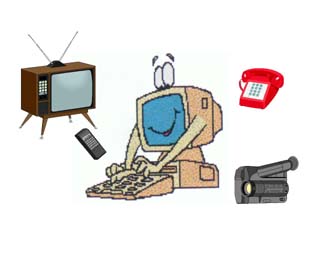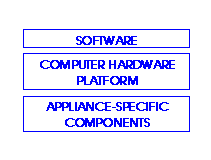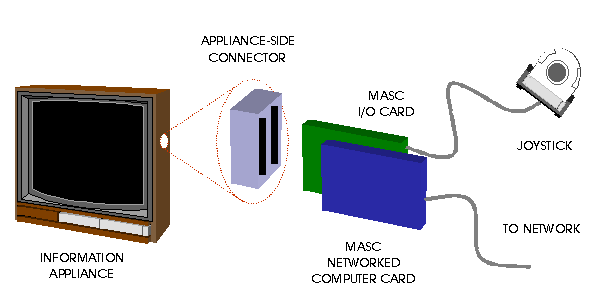
A Framework for Automation Using Networked Information Appliances
MIT9904-05
Start date: 07/99
MIT LCS
Satoshi Ono
NTT
| Research Projects |  |
A Framework for Automation Using Networked Information AppliancesMIT9904-05 Start date: 07/99 |
Srinivas Devadas and Larry Rudolph MIT LCS Satoshi Ono NTT |
Project summary |
|
The keys to making all our daily devices more useable are having networked computers embedded in them, and having easy intuitive ways for people to program the devices to do the things they want them to do.
Project description |

|
The proliferation of diverse and heterogeneous information appliances has produced a new set of problems, challenges, and opportunities. We are building a development infrastructure for information automation that combines the synergistic use of sensors, standard hardware interfaces, intelligent software, and adaptive algorithms in order to rapidly produce intelligent, networked information appliances. Using our infrastructure, we will automate many information-intensive tasks in office and home automation. We are building a computing platform that consists of locally networked computational elements attached to sensors and actuators. The sensors provide image, audio, pressure or position input. The computers control actuators within appliances and also interface with other appliances. Not only is intelligent application software is fully customizable and adaptable to user preferences, but it also makes use of our middleware that seamlessly integrates new custom or commodity sensors and actuators. This framework of computers, sensors and intelligent software allows for the rapid deployment of a wide variety of information automation problems. We believe that the deployment of such a solution should take no more than a week, including customizing hardware and writing software applications. |
Demos, movies and other examples |
 |
 |
The principal investigators |
Presentations and posters |
Publications |
Chatterjee, S., and S. Devadas,
"The MASC Composable Computing Infrastructure for Industrial Automation",
Proceedings of the 25th Annual Conference of the IEEE Industrial Electronics
Society (IECON-99), November 1999.
![]()
Proposals and progress reports |
Proposals:
NTT Bi-Annual Progress Report, July to December 1999:
NTT Bi-Annual Progress Report, January to June 2000:
For more information |